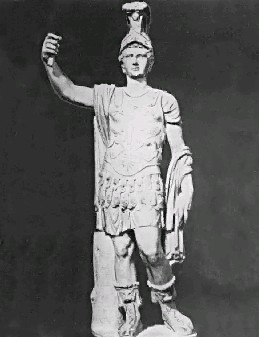|
|
||
|
My
own Pedigree
News Our
Dogs Shows Beachwalks
Our
other Passion
|
When the Greek field lord "Alexander the Great" on his way round 350 years before Christ conducts war with the continuators of the Babylonians (their name comes of the city/Tower of Babel = "Greek word for the Port of God"), namely the Median and Persians, he gets acquainted in those hostile armies with fighting dogs. It has been sufficiently described that these field lord loved dogs and it is thus logical that such conquered dogs moved to Greece, where he set-up breed kennels in the city Mollossos (hence the name Mollossos). But the history repeats himself and also Greek civilisation affects in decline. The Roman, who succeed the Greeks, take along the Mollossos to their sands for important "bread and games". The fighting dogs had to take it against all kinds of antagonists. With the legions they soon all angles of Roman Rich withdrawing and also complete Gallia, and further over "De Rijn" and "The Canal", a large part of Europe. After the soldiers with their fighting dogs came the Roman colonists, who are accompanied by a quieter type of dogs. It is logical, that from those first dogs of the Sumerians " one of the oldest civilisations, known by the "clay book tablets" in three thousand years till the Roman, through all cultures, a lot races had arisen. But nevertheless there is without any doubts a resemblance between the image from Diyala (Northern Part of Iraq) of 2000 yeas before Christ and our current Mollossos races. The Roman have been certainly the most important importers of Mollossos in our regions. But they do not have the exclusive right of it. For their arrival, Foenicische (Lebanon) ships reached our coasts. As trade products dogs from the Middle East were landed sporadically. For example the English Mastiff would descend of that real first. From
Tibet to Elsewhere Till so far beautiful thoughts, where the dog after luxuriantly moves to have yelled in the civilisations of Mesopotamia, the two flow country (= Greek, " Mesos in the middle of and Potamos river or stream" at the Eufraat and the Tigris in the current Iraq), to Greece and afterwards mainly with the Roman reaches our regions. What have all that now to do with Tibet and the Tibetan Dog as a tribe father of the Newfoundlander? The Tibetan Highland lies a lot further at east (court) of oaths! But now we reach the climax. A couple Polish scientists has proved in the summer of 1979, that the Sumerians were not related with the other Semitists peoples of the Middle East. They proved that the linguistics and the language of the Sumerians endure direct link with the pre-history from Tibet. The Sumerians were country removers who brought with their dogs from the Tibetan Highlands. Also Indo-European transmigrations, which dissipated eventually the Roman from our regions and their origin found in the Far East, bring straight through Mongolia and Central-Europe, a new cargo Mollossos. Beside all those thousands of years of adventures of these Mollossos, the real Tibetan Dog, who has remained in its birth country, has maintained itself fairly thoroughbred in its isolated mount regions. Marco Polo, the renowned traveller ( silk route ) from the thirteenth century, tell in its travel tale, that he saw in 1271 dogs tremendous to the court of the large Mogul, which as large were as a donkey of four to feet high = 1.20 meters high, and descend of the Black Tibetan wolf. The English which in their colonial area crossed the birth country of the Tibet dog took copies with them to Europe. They described the dog as an enormous dog and a faithful keeper of the herds yaks (see photograph) and sheep. Strength and courage are him own and its movement has something majestically. The sudden transmitting to lower, warmer regions with a higher air pressure became the animals fatal. Only a few survived it here and there in a Zoo. But his direct descendants did it better and have been are spread over the complete world.
Just it is the case by many other races, we are groping completely in the dark about the origin of the Newfoundlander. The next tale is one of the several tales concerning the origin of our beloved Newfoundlander. ( see Origin/Viking Discovery ).
Copyright
© |
